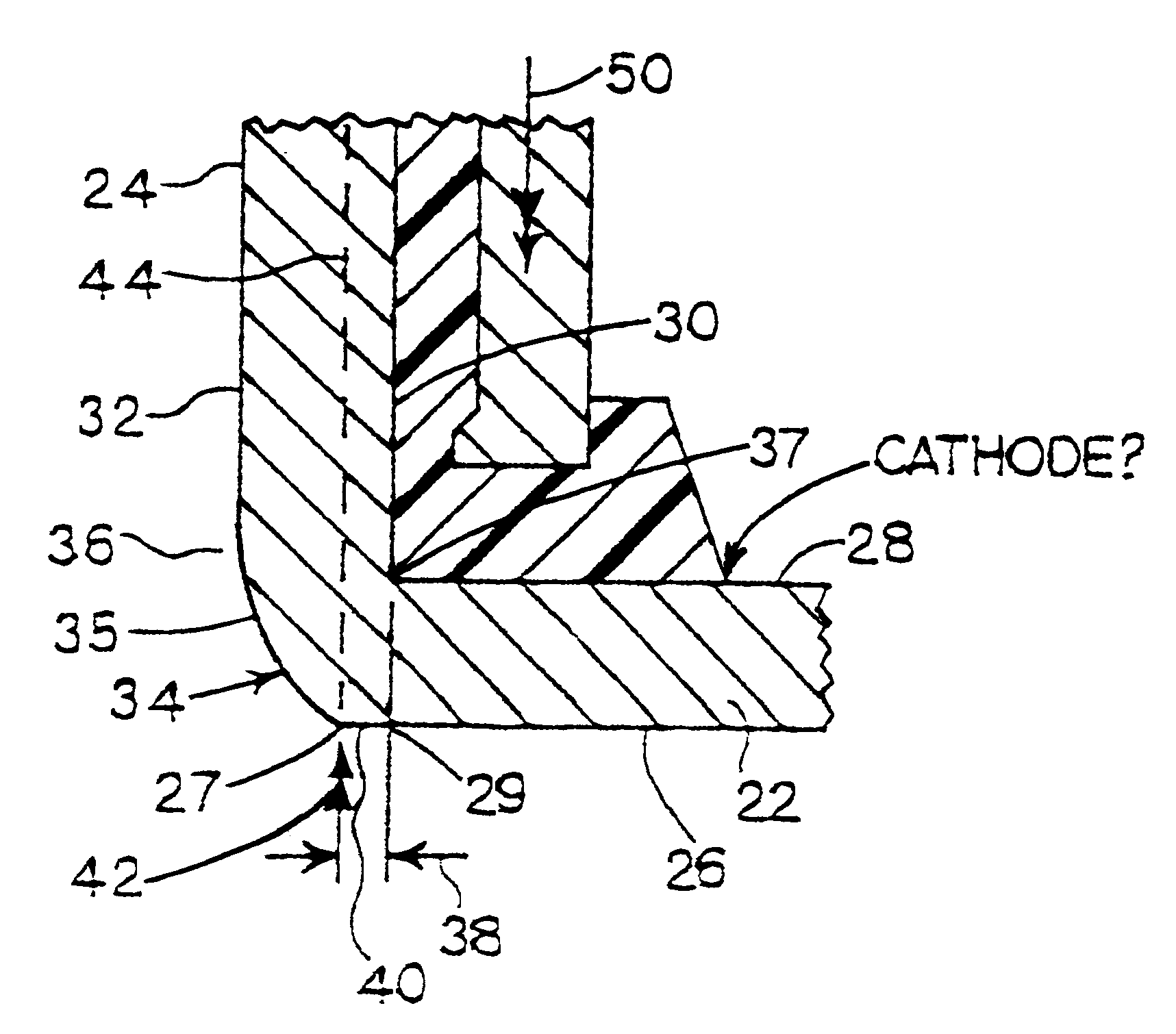Metal-air cathode can having reduced corner and electrochemical cells made therewith
a cathode can and metal-air technology, which is applied in the direction of cell components, flat cell grouping, sustainable manufacturing/processing, etc., can solve the problems of reducing the thickness of the material, reducing the need to oppose the bending moment of the cathode can, and limiting the size of the hearing aid cell
- Summary
- Abstract
- Description
- Claims
- Application Information
AI Technical Summary
Benefits of technology
Problems solved by technology
Method used
Image
Examples
Embodiment Construction
Nickel plated steel 0.008 inch thick was obtained from Hille & Muller, Dusseldorf, Germany. The metal was fabricated into cathode cans using a 45 Ton press having three draw stations. Prior to fabrication in the press, the metal was lubricated with forming lubricant. At Draw Station No. 1, a cup representing a rough approximation of the finished can was stamped in the metal strip. At Draw Station No. 2, the cup was further worked, to more closely approach the dimensions of the finished can. At Draw Station No. 3, the final can dimensions were generated. After Draw Station No. 3, the workpiece / cup was separated from the metal strip and trimmed, to complete fabrication of the cathode can.
FIGS. 6A-6C illustrate the progressive formation of the workpiece at the three draw stations. Following Table 1 illustrates the conditions of the workpiece at the conclusion of operation at each draw station.
"O / Dia" means outside diameter of the workpiece.
"I / Dial" means inside diameter of the workpiec...
PUM
| Property | Measurement | Unit |
|---|---|---|
| radius | aaaaa | aaaaa |
| thickness | aaaaa | aaaaa |
| thickness | aaaaa | aaaaa |
Abstract
Description
Claims
Application Information
 Login to View More
Login to View More - R&D
- Intellectual Property
- Life Sciences
- Materials
- Tech Scout
- Unparalleled Data Quality
- Higher Quality Content
- 60% Fewer Hallucinations
Browse by: Latest US Patents, China's latest patents, Technical Efficacy Thesaurus, Application Domain, Technology Topic, Popular Technical Reports.
© 2025 PatSnap. All rights reserved.Legal|Privacy policy|Modern Slavery Act Transparency Statement|Sitemap|About US| Contact US: help@patsnap.com



